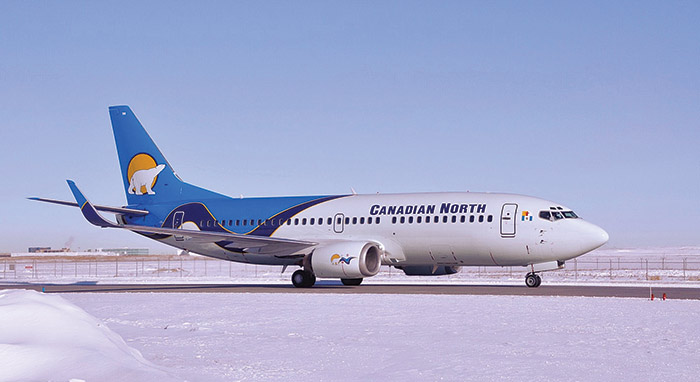Cargo Operations in Canada
By Christopher Freeze, Senior Aviation Technical Writer

According to one adage, “A mile of highway will take you just one mile, but a mile of runway will take you anywhere.” And the same applies to those who use kilometers and the metric system in their day-to-day lives.
First Air pilots have carried virtually anything that can be fit into an aircraft as cargo, from industrial generators to household goods, as many of the northern communities they serve rely upon aircraft as a lifeline that connects them to the rest of Canada and supplies them with food, mail, medicine, and other essential goods.
“The game changer in Canada has been GPS and the increased RNAV instrument procedures in place for communities in the far north,” said Capt. Peter Black (First Air), chairman of ALPA’s President’s Committee for Remote Operations. “NAV CANADA has expanded the network of RNAV GNSS approaches to allow for safe flights in poor conditions that would have been unimaginable a decade ago. And that opens a regular, reliable, lifeline to many remote communities throughout the far north.”
And while some remote areas call for the use of turboprops, namely Dash 8s and ATR 42s, this doesn’t mean jet aircraft aren’t used. In fact, “gravel kits”—modifications used to help deflect foreign object debris (FOD) from being ingested into the engine or impacting the airplane’s surfaces—are commonplace. First Air just retired its last gravel-equipped B-737-200, but Canadian North operates four B-737s with gravel deflectors—which are similar to a wide-width ski—installed on the side of each nosewheel mount and in front of each engine vortex dissipater, which uses compressor bleed air to direct FOD away from the engine inlets.
It’s not uncommon for pilots to operate on runways made of ice. Transport Canada has published guidelines (Advisory Circular 301-003) for the development, operation, and ongoing maintenance of ice fields—including how to develop and publish an instrument procedure to an ice runway. By comparison, the U.S. has only one certified ice runway, and it operates on a seasonal basis in Alton Bay, N.H.
But the ability to fly into ever-more remote locations and conditions brings with it certain challenges, including altimeter error due to cold temperatures. While the U.S. has identified “cold-temperature-restricted airports” and developed procedures for pilots to fly into such airfields safely when the temperature drops below a predetermined number, Canadian pilots have to contend with the decision as to whether a temperature correction is needed on every flight when operating from airports in below-freezing temperatures.
ALPA is actively engaging with regulators on aviation rule and regulation changes, and the Association views one recent change as a giant step forward. Transport Canada has created a new security screening process that takes place earlier in the shipment process in order to expedite the flow of cargo. The Known Consignor program, which went into effect on October 17, allows registered air cargo senders to have their cargo treated as secure, as long as a chain of custody—from certified agent to the air carrier—is maintained and verified. By placing the onus on registered consignors, it allows for better quality control of their cargo, as well as reduced additional screening fees and potential security delays. But just like in the U.S., a safety risk exists when shipments of undeclared dangerous goods find their way onto an aircraft. Unfortunately this screening program does little to mitigate that risk.
Transporting cargo in Canada is similar to transporting cargo anywhere else an airline may fly. But operating to many airports within Canada may require additional considerations—like what’s in the cargo hold, what’s the runway made of, or how cold the air is.

